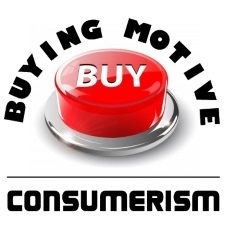Characteristics of Consumer Buying Motives
A salesman who is able to recognize the buying motives of customers, can successfully influence his customers. In modern marketing, the salesman is not selling a product but selling the benefits of a product to the consumers. Therefore, once he is aware of the problem of the consumer, he can suggest remedies. Thus, sufficient knowledge of buying motives and buying habits is highly essential for a salesman for an effective and successful sales presentation.

Table of Contents
Characteristics of Consumer Buying Motives
The characteristics of consumer’s buying motives are discussed as follows.
1. Buying motives are the inner feelings
Buying motive is an important aspect of buyer’s psychology like those of knowledge, attitude, intention or the image. It is a feeling; emotion or an instinct which creates a strong desire to purchase an article. It is an influence or a consideration that provides impulse to buy or induce an action.
2. Buying motives are countless
Like human wants, the buying motives are numerous. Man and woman are nothing but a bundle of desires. Some of these are hidden or covert and unexplained. That is why, even the psychologists have not been able to understand the human mind in its totality.
3. Buying motives differ in significance
All buying motives are not equally important. They are capable of being ranked on scale of preferences. According to A.H. Maslow (Maslow’s hierarchy of needs), the motives can be attributed to
- Physiological,
- Safety,
- Social,
- Esteem; and
- Self actualization in that order.
Physiological needs pertain to the basic needs of human beings. The need for food, clothing and shelter comes under this category. An individual, with his meager earnings will strive to have atleast a couple of square meals daily. He will also desire to have a decent clothing and a shelter.
Safety needs refer to those needs that enable a person to secure himself. Savings, insurance, investment, etc., offer the necessary security to him.
Social needs will activate a person to do certain things to gain recognition in the society. At this stage, one will develop a desire to own a house, buy an automobile, or mobile phone, etc.
Esteem needs are those that satisfies his ego. At this stage, people belonging to the elite class would show interest in luxury products, e.g., an expensive car, a movie camera, costly jewels, etc.
Self-actualization needs relate to the desire to attain one’s full potential in work and life.
4. Buying Motives are not the same for all
Buying motives need not be same for all the people. For example, Mr.X may buy car since he a handicapped person and buying a car would ensure greater mobility for him, whereas Mr.Y may buy the same model to show off his wealth. Mr.M may be entering a shop because of its proximity to his house while Mr.P does so because of its ‘lift facility’. The basis of buying motives differs from, person to person and from time to time.
5. Buying Motives differ in intensity
Intensity of buying motives differs widely from person to person even in case of the same buying motive. Thus, everyone, on an average goes in for life insurance these days as a safety measure. Thus, Mr.A may take a policy of Rs. 5,000 while Mr.B for Rs. 5,00,000. For Mr.A taking policy of Rs. 5,000 has much higher psychological value than Mr.B because the value of money differs and is much higher for a poor man.
6. Buying Motives work in unison
Whenever a person decides to buy, his buying decision is hardly the result of single buying motive. They work in unison to force him to decide. Thus, when a fully automatic washing machine is bought, the motives behind such a purchase are both ‘product and patronage‘ and ‘rational and emotional‘. The customer might have been influenced by the motives of economy, durability, vanity, pride, comfort, convenience, attractive make, colour and so on. Thus, it is a mix of all these that makes him to buy a particular product.
Related Posts
-
 Classification of Consumers on basis of Characteristics | How to deal?
No Comments | Aug 21, 2017
Classification of Consumers on basis of Characteristics | How to deal?
No Comments | Aug 21, 2017 -
 Factors determining consumption functions | Steps to increase Consumption
No Comments | Oct 8, 2017
Factors determining consumption functions | Steps to increase Consumption
No Comments | Oct 8, 2017 -
 Cross Cultural Marketing | Objectives | Areas of Research
No Comments | Mar 7, 2016
Cross Cultural Marketing | Objectives | Areas of Research
No Comments | Mar 7, 2016 -
 8 Rational Product Buying Motives of Consumers
No Comments | Jan 21, 2017
8 Rational Product Buying Motives of Consumers
No Comments | Jan 21, 2017
